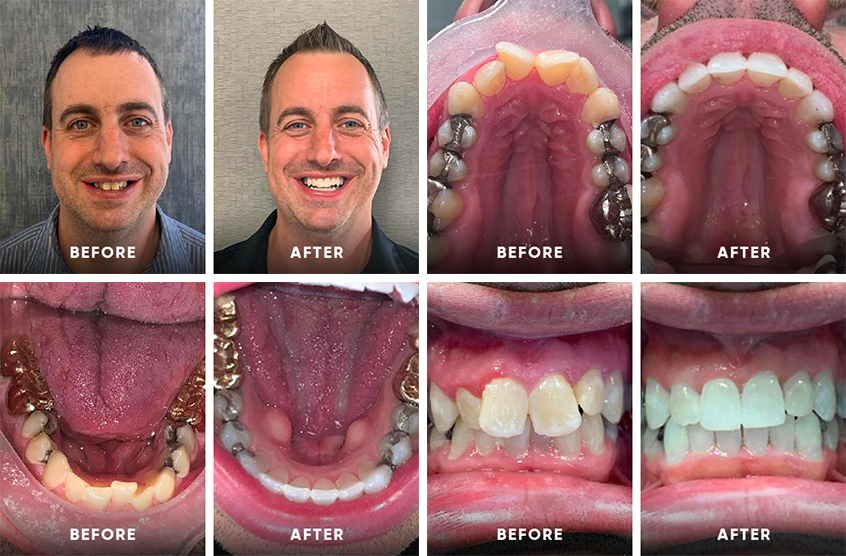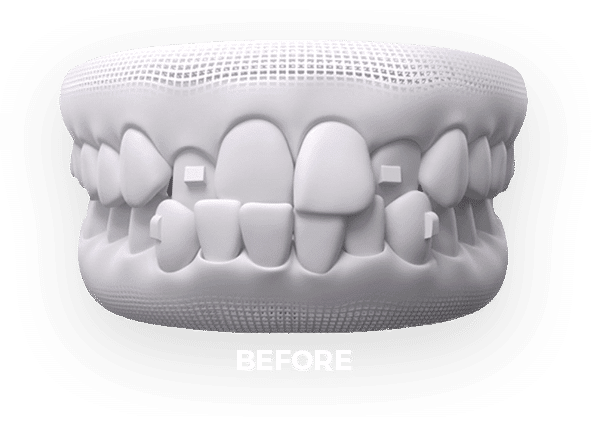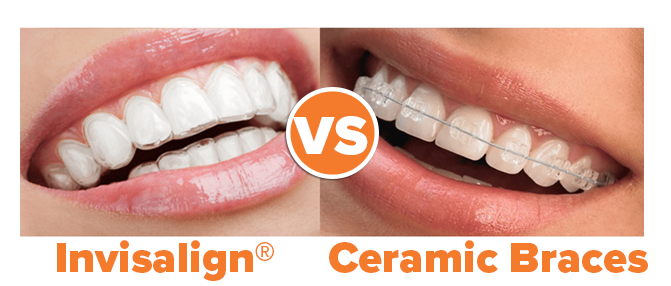Success Stories: How Invisalign Changed Lives and Improved Confidence
Success Stories: How Invisalign Changed Lives and Improved Confidence
Blog Article
Invisalign vs. Conventional Dental braces: Which Alternative Is Right for You?
When thinking about orthodontic therapy, the selection in between Invisalign and typical dental braces offers several crucial factors that warrant mindful examination. Invisalign supplies a discreet choice with detachable aligners, while typical dental braces give an extra noticeable yet effective remedy for serious imbalance. Each choice incorporates unique advantages and drawbacks connected to looks, convenience, therapy duration, and price. Comprehending these nuances is crucial for making an educated decision that lines up with your individual choices and way of living. The question remains: which alternative will ideal meet your orthodontic needs and assumptions?
Overview of Treatment Choices

In comparison, conventional dental braces include steel braces and wires that are bound to the teeth. This approach uses continuous stress over time to attain alignment. While efficient for intricate orthodontic concerns, typical dental braces require normal sees for changes and can position obstacles in keeping oral hygiene as a result of the trouble of cleansing about cords and braces.
Both choices have their benefits, and the option commonly pivots on particular oral problems, lifestyle choices, and individual compliance. Ultimately, speaking with an orthodontic expert is important for figuring out the most ideal treatment strategy customized to private demands. Recognizing the subtleties of each choice can significantly affect the overall success of orthodontic treatment.
Visual Factors To Consider
A substantial aspect affecting the option in between Invisalign and conventional dental braces is the visual allure each treatment uses. Invisalign aligners are crafted from clear plastic, making them essentially invisible when worn.
In comparison, standard dental braces include steel brackets and cables, which can be much more visible. While developments in orthodontic modern technology have actually resulted in the development of smaller braces and tinted elastics, conventional dental braces still preserve a more noticeable account. For some individuals, the exposure of dental braces may hinder them from seeking needed treatment.
Eventually, the selection between Invisalign and typical dental braces may rest on individual choices concerning looks. Individuals who prioritize discretion commonly favor Invisalign, while those who are less concerned regarding exposure might choose for typical dental braces. Understanding the aesthetic ramifications of each choice is vital for making an educated decision that aligns with one's lifestyle and preferences.
Convenience and Convenience

In regards to ease, Invisalign aligners are removable, enabling clients to enjoy their favorite foods without restriction and maintain optimum dental health. Cleaning and flossing are streamlined, as the aligners can be secured throughout these regimens, whereas standard braces require careful maneuvering around cords and braces.
Additionally, Invisalign's modern system permits less orthodontic check outs. Individuals normally get several sets of aligners simultaneously, which can streamline the therapy process and decrease time invested in the orthodontist's chair. On the other hand, standard braces demand normal modifications, making them less practical for those with hectic schedules. Invisalign. Overall, the convenience and comfort of Invisalign make it an attractive choice for lots of people seeking orthodontic treatment.
Treatment Period and Efficiency
While both Invisalign and conventional dental braces are effective in dealing with dental imbalances, the period of therapy can vary considerably in between both alternatives. Commonly, Invisalign treatment can take anywhere from 12 to 18 months, depending upon the complexity of the instance. The clear aligners work by slowly changing teeth right into their wanted positions, and normal follow-ups with an orthodontist help make sure progression remains on the right track.
On the other hand, typical braces usually require a longer commitment, typically varying from 18 months to 3 years. Discover More This results from their fixed nature and making use of cables and brackets, which can be extra effective for complex situations and extreme imbalances (Invisalign). The therapy performance of traditional braces is well-documented, as they enable accurate adjustments and greater control over tooth movement
Ultimately, the option between Invisalign and conventional braces may depend upon both the anticipated treatment period you could try this out and the details oral concerns handy. Consulting with an orthodontist is important, as they can supply tailored recommendations based on specific needs, making certain the chosen approach aligns with desired outcomes and durations.
Cost Contrast and Insurance Choices
Expense plays a substantial function in the decision-making process for people thinking about orthodontic therapy, whether choosing for Invisalign or standard braces. Usually, the expense of Invisalign ranges from $3,000 to $8,000, while traditional braces usually cost in between $2,000 and $6,000. Aspects influencing these prices consist of the complexity of the case, the duration of therapy, and geographical area.
Insurance protection can considerably affect out-of-pocket expenses. Lots of dental insurance strategies offer partial insurance coverage for orthodontic treatments, but the specifics can differ commonly. It is essential for patients to assess their insurance plan to figure out the extent of insurance coverage for either option. Usually, conventional dental braces may be much more frequently covered by insurance coverage plans compared to Invisalign, which some insurers categorize as an aesthetic procedure.
In addition, several orthodontic methods supply adaptable payment plans, making both treatment choices a lot more accessible. Patients must ask concerning potential funding options and price cuts for ahead of time repayments. Assessing the total cost, including insurance policy advantages and layaway plan, is essential for making an informed choice that straightens with both visual choices and spending plan factors to consider.

Verdict
In summary, review the selection in between Invisalign and conventional dental braces rests on numerous aspects, consisting of aesthetic choices, convenience, therapy period, and expense. Invisalign supplies a discreet, detachable choice that facilitates dental health and nutritional versatility, while typical braces might be preferable for complicated dental problems and commonly come at a reduced rate point. Ultimately, appointment with an orthodontist is important to analyze individual conditions and determine one of the most suitable therapy alternative for achieving ideal oral placement.
When considering orthodontic treatment, the option in between Invisalign and traditional braces presents a number of crucial variables that merit cautious analysis.Comparing Invisalign and standard dental braces discloses distinctive therapy alternatives for orthodontic improvement.While both Invisalign and typical braces are effective in correcting dental misalignments, the period of treatment can vary dramatically in between the 2 choices.Expense plays a substantial duty in the decision-making process for individuals taking into consideration orthodontic therapy, whether choosing for Invisalign or standard dental braces.In summary, the selection in between Invisalign and typical dental braces hinges on multiple elements, consisting of aesthetic preferences, comfort, therapy period, and expense.
Report this page